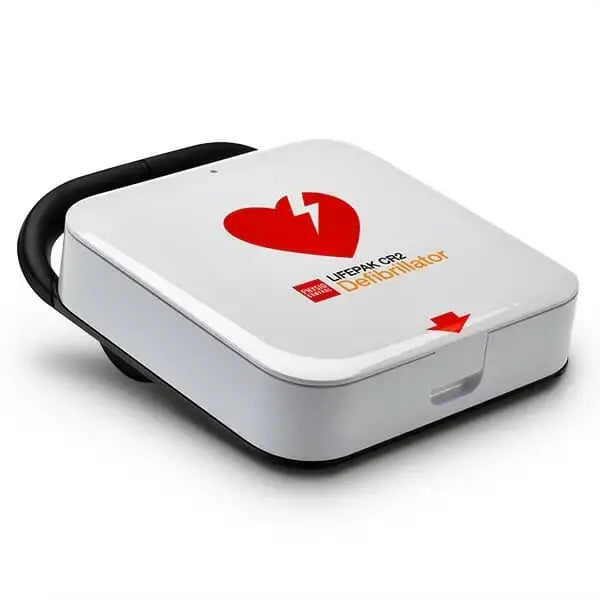Introduction: When Every Second Counts
Every year in Canada, approximately 50,000 people experience cardiac arrest outside of hospital settings. With each passing minute without defibrillation, the chance of survival decreases by 7-10%. This stark reality underscores the critical importance of Automated External Defibrillators (AEDs) in our communities.
AEDs are portable electronic devices that automatically diagnose life-threatening cardiac arrhythmias and treat them through defibrillation—applying an electrical shock to restore normal heart rhythm. Their simplicity and effectiveness make them invaluable tools that can be operated by virtually anyone, even without medical training.
Understanding Sudden Cardiac Arrest in Canada
Sudden cardiac arrest (SCA) remains one of Canada's leading causes of death, claiming more lives annually than breast cancer, prostate cancer, house fires, firearms, and motor vehicle accidents combined. Unlike a heart attack (which occurs when blood flow to the heart is blocked), SCA is an electrical malfunction that causes the heart to stop beating entirely.
The Canadian Reality:
- More than 50,000 cardiac arrests occur annually outside of hospitals
- Current survival rates average just 5-7% across the country
- Communities with comprehensive AED programs have shown survival rates of up to 40%
- For every minute that passes without defibrillation, survival chances decrease by 7-10%
The AED Advantage: Technology That Saves Lives
Modern AEDs represent remarkable technological advances that have democratized emergency cardiac care. These sophisticated yet user-friendly devices provide:
Advanced Features of Canadian-Approved AEDs:
- Automated analysis: The device assesses the heart rhythm and determines if a shock is needed
- Voice prompts: Step-by-step instructions guide users through the entire process
- Visual indicators: Clear symbols and lights help users understand what to do next
- Pediatric capabilities: Many models feature settings for children under 8 years old
- Data recording: Information from rescue attempts can be downloaded for medical review
- Self-testing: Regular automated diagnostics ensure the device is operational

https://aed.ca/products/zoll-aed-3
AED Accessibility in Canada: A Provincial Perspective
While Health Canada regulates AEDs nationally, their distribution, placement, and registration vary significantly across provinces and territories. Understanding these regional differences is essential for organizations looking to implement AED programs.
Ontario:
Ontario has over 20,000 publicly accessible AEDs and is in the process of setting up a provincial registry. The province has implemented the Chase McEachern Act (Heart Defibrillator Civil Liability Act), which provides liability protection for people who use AEDs in emergencies.
British Columbia:
BC's PAD (Public Access Defibrillation) program has placed thousands of AEDs in public spaces. The province offers comprehensive AED/CPR training programs through St. John Ambulance and the Heart and Stroke Foundation.
Alberta:
The Alberta government has invested heavily in the Public Access to Defibrillation program, placing AEDs in schools, recreation centers, and other public buildings. The HEART (Heart Emergency Access Response Time) program connects AEDs to emergency dispatch centers.
Quebec:
Quebec has implemented the "Coeur-à-tout" program, placing AEDs in public areas with high traffic. The province requires AEDs in certain public facilities and maintains a provincial registry.
Atlantic Provinces:
Newfoundland, Nova Scotia, New Brunswick, and Prince Edward Island have varied programs but all emphasize public access to AEDs, particularly in rural communities where ambulance response times may be longer.
Northern Territories:
The Yukon, Northwest Territories, and Nunavut face unique challenges due to their vast geography and remote communities. Special programs have been developed to ensure AED availability in these regions.
Selecting the Right AED for Your Organization
Choosing the appropriate AED requires careful consideration of several factors:
Key Considerations:
- Environment: Where will the AED be placed? Consider temperature extremes, exposure to moisture, dust, etc.
- User population: Who might need to use the device? Consider language, technical proficiency, and training.
- Pediatric capabilities: Will children potentially need treatment?
- Maintenance requirements: How often do batteries and pads need replacement?
- Connectivity features: Can the device transmit data to emergency services or healthcare providers?
- Cost of ownership: Beyond initial purchase, what are the ongoing maintenance costs?
Leading AED Models Available in Canada:
- Zoll AED 3: Features a full display screen and built in pediatric capabilities
- Zoll AED Plus: Features real-time CPR feedback and long battery life
- Physio-Control LIFEPAK CR2: Fully Billingual and ambient noise volume adjustment

https://aed.ca/products/stryker-physio-cr2-semi-auto-english-wifi
Legal Framework and Liability Protection
Many Canadians hesitate to use AEDs due to concerns about legal liability. Understanding the legal protections is crucial for encouraging more widespread use of these life-saving devices.
Good Samaritan Legislation:
All Canadian provinces and territories have enacted some form of Good Samaritan legislation that protects individuals who provide emergency assistance. These laws generally protect responders from liability when they act in good faith and without gross negligence.
AED Implementation Best Practices
Organizations implementing AED programs should follow these guidelines for maximum effectiveness:
Strategic Placement:
- Position AEDs in high-traffic areas with clear visibility
- Ensure they can be accessed within a 3-minute round trip from any location
- Use standardized signage
- Consider locations based on risk assessment (age demographics, physical activities)
Staff Training:
- Provide initial and refresher training for all potential responders
- Incorporate AED awareness into new employee orientation
- Conduct regular drills simulating cardiac emergency responses
- Maintain training records and certification updates
Maintenance Protocol:
- Assign a designated AED coordinator responsible for oversight
- Implement a regular checking schedule
- Document all maintenance activities
- Establish a replacement schedule for batteries and electrode pads
- Ensure software is updated according to manufacturer guidelines
The Business Case for AEDs
Beyond the humanitarian imperative, there are compelling business reasons to invest in AEDs:
Return on Investment:
- Workplace cardiac arrest survival rates increase from 5% to more than 40% with properly implemented AED programs
- Reduced liability and potential insurance premium savings
- Enhanced corporate reputation and demonstration of duty of care
- Compliance with workplace safety requirements that may be required by law in certain industries
Cost Considerations:
- Initial device costs range from $2,000 to $2,500
- Annual maintenance costs average $100-$200
- Electrode pads require replacement every 4-5 years
- Batteries typically need replacement every 4-5 years
Training and Education: Keys to Success
Even the most sophisticated AED is only as effective as the people trained to use it. Comprehensive education programs should include:
Training Elements:
- Recognition of cardiac arrest symptoms
- Proper CPR techniques
- AED operation procedures
- Post-event care and reporting
- Regular refresher sessions
Conclusion: A Call to Action
The evidence is clear: widespread AED deployment saves lives. As we work toward a Canada where no one is more than three minutes from an AED, every organization has a role to play.
By implementing comprehensive AED programs, maintaining devices properly, and ensuring appropriate training, Canadian businesses and communities can dramatically improve survival rates from sudden cardiac arrest.
Don't wait for legislation to mandate AEDs in your facility—take proactive steps today to protect employees, customers, and visitors. The life you save could be someone you know.
Additional Resources
- Heart and Stroke Foundation of Canada
- St. John Ambulance
- Canadian Red Cross
- Public Health Agency of Canada
- Workplace Safety and Insurance Board
This comprehensive guide is brought to you by AED.ca, Canada's premier provider of automated external defibrillators and life-saving training programs. Contact us today to learn how we can help you implement a complete AED solution for your organization.






